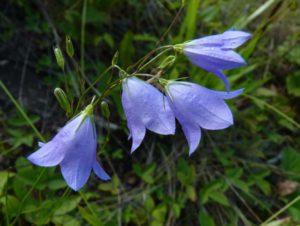Special Message From the President 2022
Hello RRVFN,
Please see the minutes from the Monday Dec 5, 2022 meeting.
Our club founded in 1995 and had a very good run. Our mission was to promote appreciation, education, conservation and wise use of our natural resources in the Rainy River watershed.
We gathered partners in the community to create the Cranberry Peatlands Interpretive Trail to provide our community with an opportunity to steward wild lands in a place that had become a casual dumping spot at the end of a dead-end road. Over the years we’ve partnered to acquire funding to continue to expand the trail and it has become a jewel of Alberton. It attracts everyone from young families walking their toddlers to tourists from far way to professional biologists dropping in to do a little bioblitz on their way to field work in the north.
We participated in a number of forest management planning sessions for the Crossroute Forest and commented on hydro-electric development of the Namakan River and various proposed provincial legislations which affected wildlife and wildlands throughout Ontario.
We hosted the Great Lakes Odonata Meeting which brought dragonfly experts and enthusiasts from the US and southern Ontario to help inventory our district species. New species records resulted from the symposium and for a number of years our club built expertise on dragonflies which resulted in more new records here and in nearby counties of Minnesota. Notably, we found the exuvia of the apparently still elusive and rare Pygmy Snaketail on the Namakan River, an event which involved more experts and field trips to see if it was possible to get a better picture of its habitat there, and the writing of the COSEWIC document on the Pygmy Snaketail for its protection as a rare species in Ontario.
Many of us participated in citizen science projects such as Feederwatch, the Birds Canada Loon Survey, the Great Lakes Marsh Monitoring Program, the Ontario Owl Survey, the Christmas Bird Count, the Ontario Breeding Bird Atlas (#2 and #3), the Breeding Bird Survey, the Ontario Nest Records Scheme, the Ontario Eastern Bluebird Society, local control of purple loosestrife, local requests from OMNR for various special surveys such as Red-headed Woodpecker and Sandhill Crane, various treeplanting and highway clean-up projects and contributed rare species sightings to Ontario’s Natural Heritage Information Centre. I’m sure you’ll think of more! We were small but mighty in our biodiversity survey footprint.
We contributed articles to the newspaper, community presentations, events for youth rangers and other youth groups, field trips and a stunning website which in a few short years has become a repository of natural heritage information and images from the district.
At our final AGM we were unable to form an executive. Over the past ten years the club membership had shrunk and executive positions had cycled through all willing to take them. We’ve voted, according to article 16 of our constitution, to contribute our remaining assets to Rainy River District Stewardship, who have promised to use the funds wisely and preferably to support our current projects. They have been looking both for new members and new ideas for projects and are both saddened by our dissolution but heartened that we might join forces and work together going forward.
They’d love to see us join them either as regular members or in some sort of consulting/advisory capacity. Their December meeting is coming up too quickly to change, and they’re in a small venue for it, so they would be too limited ii space for any of us thinking of checking them out. However, they have asked me to let you know that we’re all more than welcome to attend their January meeting and all to follow. They meet on the second Tuesday of the month at 6:15pm and the location varies. (They don’t meet July and August).

